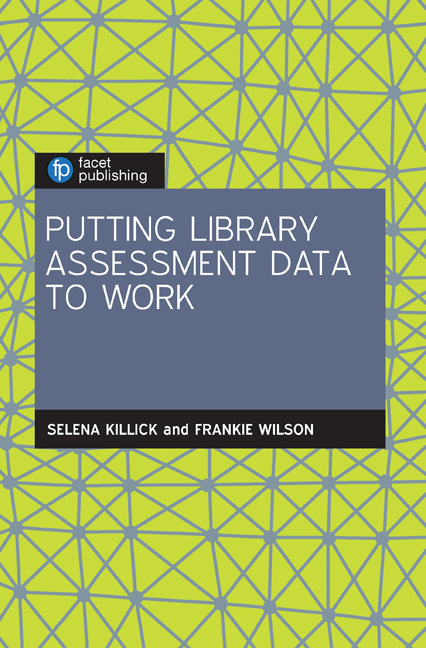Book contents
- Frontmatter
- Dedication
- Contents
- List of figures and tables
- List of case studies
- Authors and contributors
- Acknowledgements
- 1 Introduction to Library Assessment
- 2 Institutional Measures of Student Satisfaction
- 3 Standardised Library Surveys
- 4 In-House Library Surveys
- 5 Library Statistics
- 6 Qualitative Feedback
- 7 Emerging Techniques
- 8 More than Measuring: using Assessment Holistically
- 9 Conclusions
- Index
2 - Institutional Measures of Student Satisfaction
Published online by Cambridge University Press: 02 October 2019
- Frontmatter
- Dedication
- Contents
- List of figures and tables
- List of case studies
- Authors and contributors
- Acknowledgements
- 1 Introduction to Library Assessment
- 2 Institutional Measures of Student Satisfaction
- 3 Standardised Library Surveys
- 4 In-House Library Surveys
- 5 Library Statistics
- 6 Qualitative Feedback
- 7 Emerging Techniques
- 8 More than Measuring: using Assessment Holistically
- 9 Conclusions
- Index
Summary
Chapter overview
Regular surveying of student satisfaction within universities is commonplace. Final year undergraduate students at all UK higher education institutions have completed the National Student Survey (NSS; www.thestudentsurvey.com/) since 2005, which is similar to international surveys. National and international standardised student satisfaction surveys have become more common in the past decade, prior to this the use of surveys to measure student satisfaction was commonly used at a local level. One of the earlier examples of an institutional survey was developed by Student Satisfaction Research Unit at the University of Central England, evaluating the whole university experience, including the Library (Green et al., 1994). General student surveys assessing students’ experiences of institutional life vary, depending on the institution setting the questions. Institutional surveys examine a variety of aspects of student life, potentially including teaching and learning, social life, finance, and student support; evaluation of the library is inevitably limited in these forms of assessment. However responses to institutional surveys are often publicised more widely than responses to surveys conducted by libraries so the visibility of these survey results can be greater than for other forms of assessment with senior stakeholders.
In this chapter we explore some of the compulsory and optional standardised methodologies used to measure student satisfaction today, which all have the same common characteristic: a standardised set of questions addressing institution-wide issues. Often institutional-specific issues can be addressed by including questions on local matters. While the library may be assessed when such a standardised methodology is used, it can sometimes be difficult to identify how and where to improve the library based on a single survey question alone. However, there are several advantages of libraries using an institutional survey to gain student feedback about library services:
• the relatively low administration cost to the library as the surveys tend to be administered centrally within the institution
• the use by the institution of modern survey design methods, often resulting in a more comprehensive and robust survey being used
• where standardised surveys are used, being able to benchmark the data, allowing institutions to put their results into context against peer institutions
• when the surveys are compulsory, the response rates are high and results within and outside the institution are usually publicised widely
- Type
- Chapter
- Information
- Putting Library Assessment Data to Work , pp. 13 - 30Publisher: FacetPrint publication year: 2019



